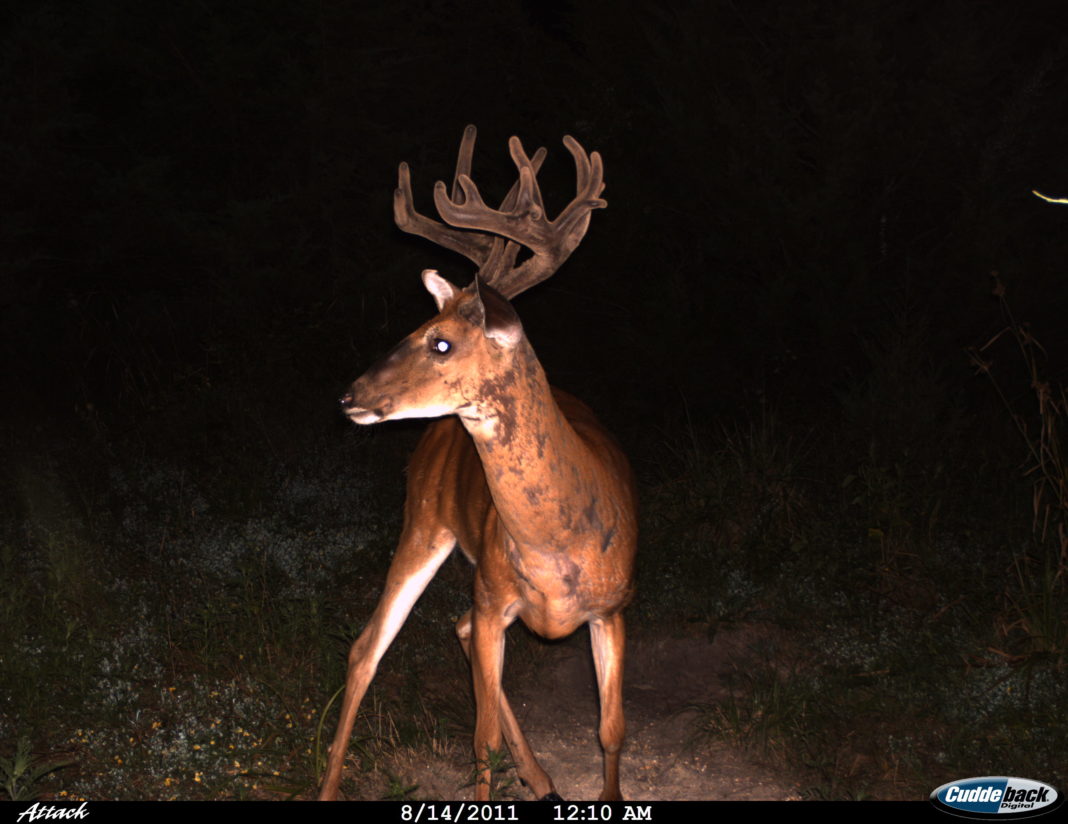Deer antlers are one of the true wonders of nature. For example, a mature bull Yellowstone elk will grow more bone on its head in one season than the average American has in its entire body. Part of this incredible growth is “velvet,” the soft, furry skin under which this phenomenal growth occurs. If you were to touch a buck’s horns in velvet, it would feel warm; that’s because a huge blood flow is needed for bone growth to occur. This amazing antler-growing process ends abruptly in late summer as daylight diminishes and the pedicle shuts off the blood supply, causing the velvet to die and fall off. Sometimes, however, that doesn’t happen, which results in deer that are “in velvet” throughout the fall.
Jack Groves of Iowa took a huge buck in Iowa during the November hunt and wrote to the Quality Deer Management Association for an explanation. Here’s what they said.
On a regular basis, QDMA is asked about bucks with strange antlers that remained in velvet when they shouldn’t have. Most recently, we got an e-mail and photo (seen above) from Jack Groves of Iowa. Jack wrote: “I arrowed a 160- to 170-inch non-typical buck on November, 12, 2011 that was still in full velvet. I was told he never shed his antlers and was always in velvet because he had damaged his testicles. Is this true or is there some other explanation?”
This condition in whitetail bucks that results in antlers in velvet beyond the normal velvet-shedding date of late August to early September is usually caused by a birth defect known as cryptorchidism. In extreme cases both testicles remain in the abdominal cavity and never descend into the scrotum…
Tell us what you think in the comments section below.



















![The Best Deer Camp Chili [VIDEO] Deer Chili Ingredients, Tomatoes, Chili Spices](/wp-content/uploads/2015/10/Deer-Chili-Deer-Camp-Recipe-218x150.jpg)
![How to Call Elk Early in the Season [VIDEO]](/wp-content/uploads/2016/08/byers003-218x150.jpg)


![jack_groves_buck_574_409_s[1]](http://www.eregulations.com/wp-content/uploads/2013/07/jack_groves_buck_574_409_s1-300x213.jpg)


![Idiots Disturb Hunter: How Would You Have Handled It? [VIDEO]](/wp-content/uploads/2015/10/DSC00110-e1474487693878-100x70.jpg)
![Albino Buck Shocked to Shed His Antlers [VIDEO]](/wp-content/uploads/2015/10/AlbinoDeer-100x70.jpg)